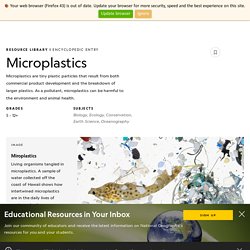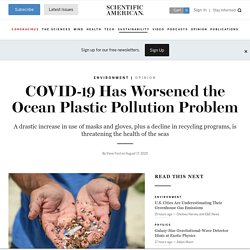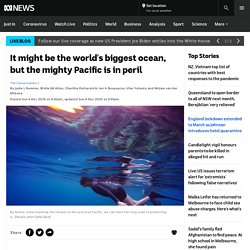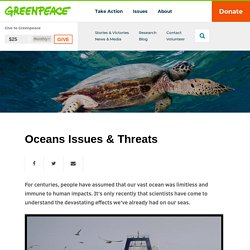

National Geographic Society. Microplastics, as the name implies, are tiny plastic particles.

Officially, they are defined as plastics less than five millimeters (0.2 inches) in diameter—smaller in diameter than the standard pearl used in jewelry. There are two categories of microplastics: primary and secondary. Primary microplastics are tiny particles designed for commercial use, such as cosmetics, as well as microfibers shed from clothing and other textiles, such as fishing nets. Secondary microplastics are particles that result from the breakdown of larger plastic items, such as water bottles.
This breakdown is caused by exposure to environmental factors, mainly the sun’s radiation and ocean waves. The problem with microplastics is that—like plastic items of any size—they do not readily break down into harmless molecules. National Geographic Society. COVID-19 Has Worsened the Ocean Plastic Pollution Problem. Eight million metric tons of plastic waste enter the oceans every year.

This equates to one garbage truck’s worth of plastic being dumped into our oceans every minute. The total weight is the equivalent of 90 aircraft carriers. On top of that, models project that by 2050, there will be more plastic by weight than fish in the oceans. This is tragic for many reasons. Whales, fish, seabirds, turtles and many other animals are eating the plastic and dying en masse. This, of course, was all pre-COVID-19. At the outset, it seemed that there might be an environmental silver lining to the global pandemic. However, the same cannot be said for our oceans, which have been hard hit in recent months. The practical problems with gloves and masks finding their way into our rivers and oceans is that they can easily be mistaken for jellyfish, a favorite food of sea turtles. And that’s just PPE. The oil market collapsed, making plastic cheaper to use than ever. This disclosure is a giant leap.
It might be the world's biggest ocean, but the mighty Pacific is in peril. The Pacific Ocean is the deepest, largest ocean on Earth, covering about a third of the globe's surface.

An ocean that vast may seem invincible. Yet across its reach — from Antarctica in the south to the Arctic in the north, and from Asia to Australia to the Americas — the Pacific Ocean's delicate ecology is under threat. In most cases, human activity is to blame. Oceans Issues & Threats (USA) With such an incredible amount of plastic waste taking over our oceans, we are witnessing a pollution crisis occur around the world.

Trash is being eaten by marine life and has entered every level of the food chain — even ending up in the seafood on our plates. Global fish populations — a critical source of food for millions of people — are in danger of collapsing due to widespread and destructive fishing practices. The global industry is overrun with human rights violations — from human trafficking and forced labor to debt bondage and inhumane working conditions Currently, there is very little protection for our threatened marine life and dwindling fish stocks — with less than two percent of our oceans set aside as marine reserves, it has become all too easy for our natural resources to be exploited from lack of protection.
The time to act is now. National Geographic Society. We have all seen the photos: birds nesting in piles of garbage along the shore, fish fatally caught in discarded netting, and huge mosaics of debris floating in the ocean.

Even more alarmingly, what we see in these poignant images is only a portion of the problem. Approximately half of all plastic pollution is submerged below the ocean surface, much of it in the form of microplastics so small that we may never be able to clean them up completely. To cut through the enormity of the ocean pollution crisis, one approach is to focus on something recognizable within these images of debris.
Identify something you personally have used that may have ended up in the ocean—a water bottle perhaps. Find one in an image and ask yourself, how did it get there? Plastic is a human-made, synthetic material that was first discovered more than one hundred years ago but did not broadly enter the public sphere until the 1950s. National Geographic Explorer Heather J. Just One Word- Refillables. Oceana analyzed packaging market data for the nonalcoholic beverages industry, the market share of PET bottles, and plastic marine pollution data in 76 coastal countries around the world to estimate the total amount of PET plastic bottle marine pollution and the potential of increasing the market share of refillable bottles to reduce marine pollution from PET bottles.

Our analysis found that, based on marine pollution rates from a recent scientific study published in Science and on 2018 beverage and packaging sales information from the market analytics firm GlobalData, between 21 and 34 billion PET bottles, out of 445 billion liters of beverages sold in PET bottles, become marine pollution every year. We also found that increasing the market share of refillable bottles by 10% in all coastal countries in place of single-use throwaway PET bottles could reduce PET bottle marine plastic pollution by 22%.
This would keep 4.5 billion to 7.6 billion PET bottles per year out of the ocean. How We Can Keep Plastics Out of Our Ocean.